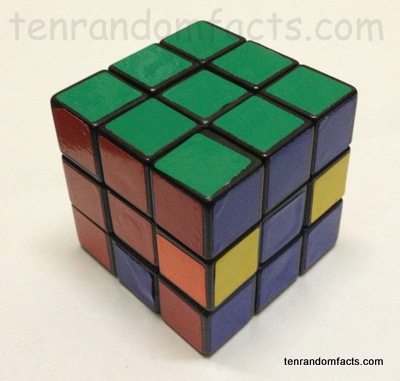Twist, turn, twist, turn Rubik’s cube
- A Rubik’s Cube is a 3D puzzle, typically a 5.7 cm (2.25 inches) cube, that involves turning connected smaller cubes to create a solid colour on each side of the large cube.
- Ernő Rubik, who was a Hungarian sculptor and professor of architecture, invented the Rubik’s Cube in 1974, and it took him more than a month to solve it.
- Rubik’s Cube was the game of the year in Germany in the 1980s, and became a craze in the same decade, as well as the most popular puzzle, with 350 million cubes being sold up to 2009.
- The classic Rubik’s Cube has 26 cubies, which are the smaller cubes that make up the large one, six faces of nine tiles, also known as the 3 x 3 x 3 cube, with the tiles traditionally white, red, blue, orange, green and yellow.
- Rubik’s Cube is also known as the ‘Magic Cube’, or ‘Büvös Kocka’, the original names, as well as the ‘Hungarian Horror’.
- It is said that some Rubik’s Cube experts can solve the puzzle in 24 to 28 moves, in the standard puzzle position.
- The Rubik’s Cube has variations that range from pocket sized 2 x 2 x 2 cubes to enormous, most expensive 17 x 17 x 17 cubes that cost over $1000 as well as virtual versions in both 4D and 5D.
- The quickest official time to solve a Rubik’s Cube is in 5.55 seconds, achieved in March 2013 by Mats Valk from the Netherlands.
- There is only one correct answer to the Rubik’s Cube, with 43 quintillion incorrect ones and both Rubik and experts believe that the cube would take more than a lifetime to solve if the pieces were moved randomly.
- Rubik invented the Rubik’s Cube to answer the following question: “How could the blocks move independently without falling apart”.
Bibliography:
Bellis, M 2013, Rubik’s Cube, About.com, <http://inventors.about.com/od/rstartinventions/a/Rubik_Cube.htm>
Rubik’s Cube, 2013, Wikipedia, <http://en.wikipedia.org/wiki/Rubik’s_Cube>






